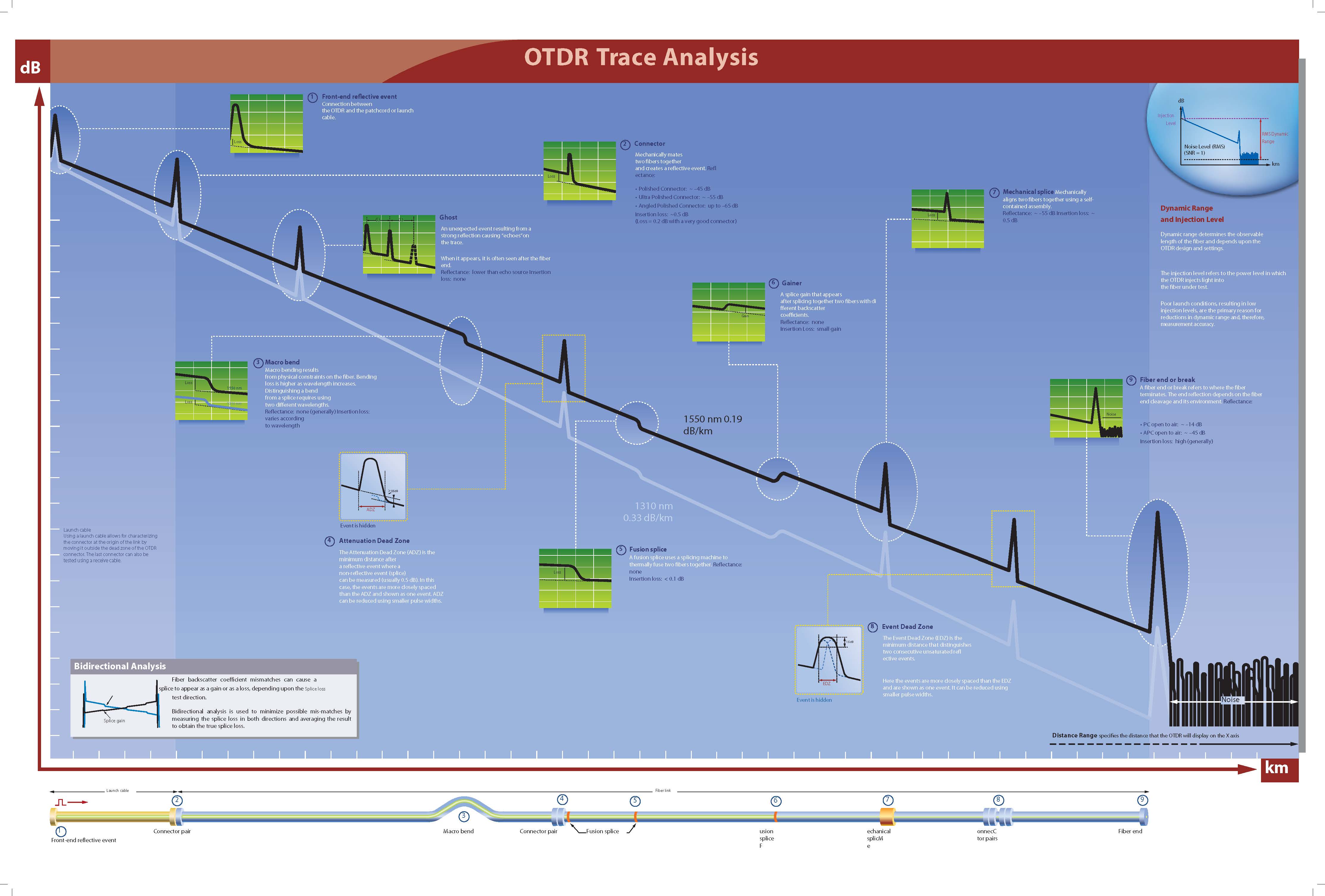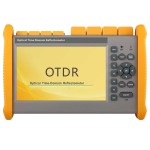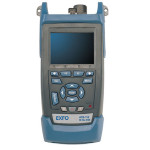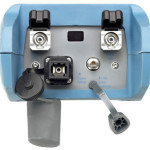OTDR FAQ (EXFO OTDR, JDSU OTDR, FLUKE OTDR, YOKOGAWA OTDR, ANRITSU OTDR, TARLUZ OTDR, etc
This document is prepared for the newbie in fiber optic industry, to share frequently asked question (OTDR FAQ) from my customer, and shred it here. please drop message to me or post comment to me about OTDR FAQ, which will help me improve this OTDR FAQ webpage.
1>. What is OTDR is short for, and what is the main function for it? OTDR is short for Optical Time Domain Reflectormeter, The OTDR act likes RADAR, it injects a series pulse (laser) from the OTDR fiber interface and transmits over the optical fiber and detects the returning signal from the fiber back-scatter and reflecting from joints (including splicing, active connecting, etc), Based on the return signal, the OTDR generates trace and display on the screen. From the trace, the OTDR device is able to calculate fiber length, attenuation and joint loss for the optical fiber.
What is the basic function for the OTDR?
Measure the length for the optical fiber
Measure the optical fiber distance between two sites
Locate fault points and ruptures of the optical fiber
Showing the trace for the optical fiber
Measure the attenuation for the optical fiber cable
Measure the refection of the reflection events for the fiber cable
2>. What’s the basic feature that an OTDR should have?
- There is distance, loss and reflection figure for each event
- It should display the length and attenuation for the whole fiber cable
- Large storage function for traces
- Easy operation and with GUI interface.
- RS232/USB/Network etc to upload data to a PC
- PC analysis software to analyzing the stored data
- Generate report for the tested traces
- Back light for dark and night operation
- Built-in VFL (Visual Fault Locator)
3>. How to select an OTDR?
Before you buy the OTDR, please evaluate your needs and the skill of the intended users first, ask yourself several questions:
Are you installing or maintaining fiber?
If Maintenance, is finding the location of the fault the main task?
If Installation, do you need measure more than loss and length? E.g. Connector quality, dispersion, Optical Return Loss?
If you get the answer, please visit link for more details about choose the right OTDR: How to choose the right OTDR?
4>. How many OTDR manufacturers in the market?
There are many manufactures like EXFO, JDSU, Fluke, TARLUZ, Yokogawa, Anritsu, etc.
5>. What is the dynamic range
The dynamic range determines the total optical loss that the OTDR can analyze, and the total length of the fiber link can measure unit. The higher the dynamic range, the greater the distance the OTDR can analyze. The specification of the dynamic range must be carefully considered for two reasons as below.
OTDR manufacturers specify the dynamic range of ways (playing with specifications as pulse amplitude, signal-to-noise ratio, averaging time, etc.). It is therefore important to understand them thoroughly and avoid making comparisons unsuitable.
Having an insufficient dynamic range results in an inability to measure the full link length, affecting, in many cases, the precision of the link loss and connector losses and attenuation far end . A good method is to select an OTDR empirical whose dynamic range is 5 to 8dB higher than the maximum loss you will find.
6>. What is Event dead zone and attenuation dead zone
Event Dead Zone: Refers to the minimum necessary for consecutive reflection events can be “solved”, ie differentiated from each other. If a reflective event is within the dead zone event that precedes it, it cannot be detected or measured correctly. Industry standard values ranging from 1-5 m for this specification.
Attenuation Dead Zone: Refers to the minimum required distance after a reflective event, for the OTDR to measure a loss of reflective event or reflection. To measure and characterize small links or locate faults in cables and patch cords, it is best to have the attenuation dead zone as small as possible. Industry standard values ranging from 3 to 10 m for this specification.
7>. What is the pulse, and how to choose pulse width based on the fiber length
The key is to always use the shortest pulse width possible that will satisfy the trace quality and allow the user to see the end of the fiber. Short pulse widths are used for short fibers. Long PW’s are used on long fibers. If the trace quality exhibits excessive noise that cannot be removed by additional averages, select the next higher pulse width.
8>. What is OTDR resolution
The sampling resolution is defined as the minimum distance between two consecutive sampling points acquired by the instrument. This parameter is important because it defines the ultimate distance accuracy and ability OTDR troubleshooting. Depending on the selected pulse amplitude and the range of distance.
9>. Can I use SM OTDR to test MM fiber
It may use SM (Single Mode) OTDR to test MM (Multimode) fiber, but not accurate, the distance, cable loss, connector loss, return loss all may not right, because the laser inject from small core diameter fiber to large core diameter fiber, the laser cannot be fully injected, so the test result is not precise.
10>. What is OTDR Launch Cable, why do I need it.
An OTDR Launch Cable is able to allow the OTDR to measure the loss and reflection of the first connection in the link. However, it won’t eliminate the ‘dead zone’ after the first connection in the fiber link. We generally recommend 1km launch cable for the fiber network.
11>. What is tail cord and why do I need it.
A tail cord is a long distance patch cord connect to the end of the tested fiber link, it creates OTDR back scatter after the final connection in the fiber link under test, to measure the loss and reflection for the last connection in the network
12>. What is an “echo” or “ghost” event on an OTDR trace
An echo occurs when the OTDR receives unwanted multiple reflections. Large reflective events are more likely to cause multiple reflections due to large amounts of energy reflected back to the OTDR. Portions of the energy reflected multiple times result in echoes. These waveform artifacts look like real events; however they seldom have loss associated with them.
Please Share this OTDR FAQ to let more people could enjoy it. and please also drop message to me if there is any mistake, we share update this OTDR FAQ webpage as soon as possible.









